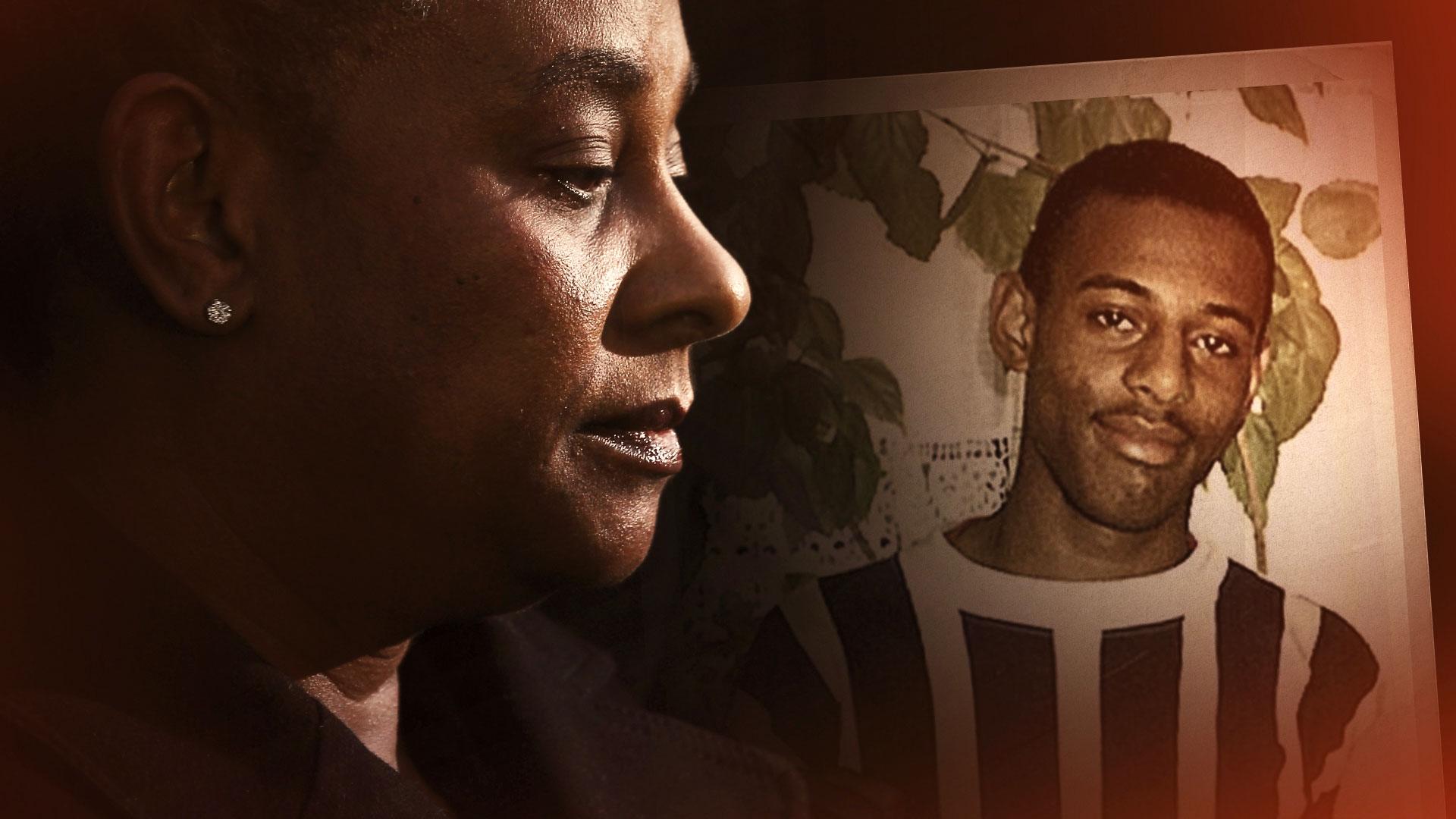Stephen Lawrence: How the Met Police failed to spot suspect Matthew White
- Published
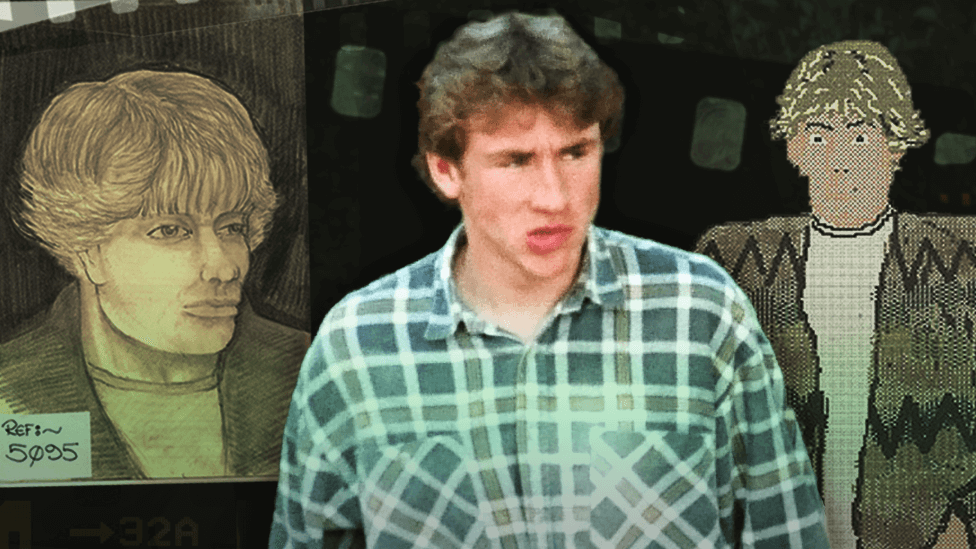
An artist's impression of the "fair-haired attacker", Matthew White and a police e-fit
The most notorious racist murder in British history has never been fully solved, but everyone thinks they know who attacked Stephen Lawrence.
Five names.
David Norris and Gary Dobson were convicted of murder a decade ago. Luke Knight and brothers Neil and Jamie Acourt have been suspects for 30 years. All three have denied being involved. Neil Acourt and Knight were acquitted of murder in 1996.
Duwayne Brooks, who was with Stephen on the night of 22 April 1993, said there were six attackers. His descriptions of the man who led the attack and first struck Stephen - along with other eyewitness accounts - do not match the appearances of the five main suspects.
Who was the mystery figure?
After the Met stopped looking into Stephen's murder three years ago, I decided to investigate myself.
The BBC can now name a sixth suspect - Matthew White.
I traced witnesses, saw police documents, and uncovered new evidence that shows how officers mishandled investigations relating to White.
The BBC has found that witnesses told detectives White had said he was present during the attack, and has uncovered evidence that shows his alibi was false. For the first time, police surveillance photos from 1993 are published, in which White is depicted bearing a striking resemblance to eyewitness descriptions of the unidentified attacker.
But at key moments the police failed to pull together all these pieces of evidence on White.
Responding to the BBC's revelations, Baroness Doreen Lawrence, Stephen's mother, said it was "infuriating" that the man said to have led the attack on her son had evaded justice due to police failings, but not a single officer had faced consequences.
She said: "The failure to properly investigate a main suspect in a murder case is so grave that it should be met by serious sanctions. Only when police officers lose their jobs can the public have confidence that failure and incompetence will not be tolerated and that change will happen."
Like the five original five prime suspects, Matthew White has been in the case since the start. For years he was a witness, not a suspect, and known publicly as Witness K.
After the murder, detectives heard White had been in the local area on the night of murder, and had interacted with various people. They were also told he had been at the home of two of the suspects that night, and less than two weeks into their inquiries, officers spoke to him.
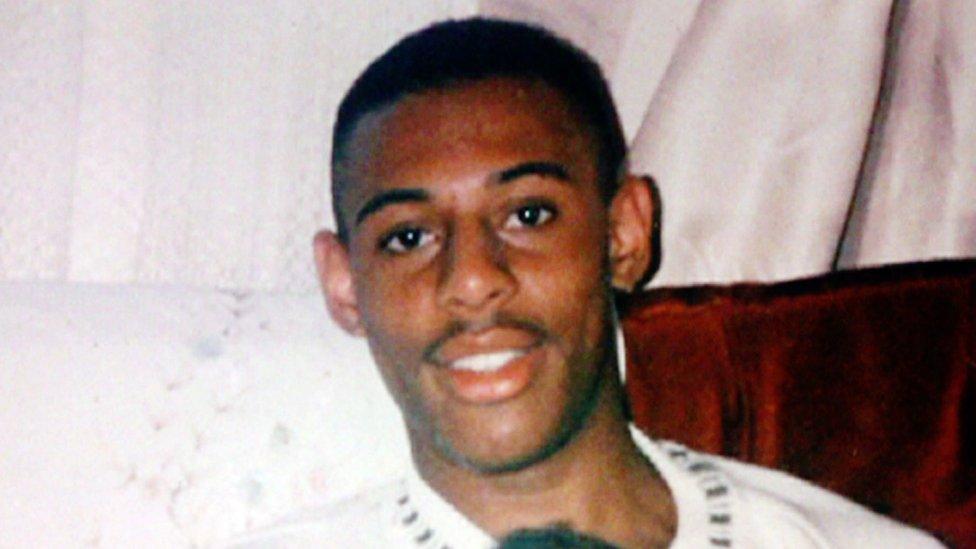
Stephen Lawrence's murder and the failed investigation sparked a landmark public inquiry
In his witness statement, he said he had visited the home of Neil and Jamie Acourt about an hour after the murder, briefly seeing the brothers and Gary Dobson at the front door.
What became the accepted narrative was that White, after hearing about the stabbing from someone who had passed by in the aftermath, brought news of the incident to the suspects and others.
He stated he had been on Well Hall Road and "saw a lot of police around" before going to the Acourts' house.
"Jamie, Neil and Gary Dobson came to the door and I said, 'Someone's been killed, stabbed up Well Hall', and they said, 'It weren't us'."
In 1999, the five men were interviewed separately on an ITV programme. Dobson and the Acourts gave inconsistent accounts of how they had first heard about the attack.
Gary Dobson said he had found out by a conversation at the door that involved a visitor - meaning White - saying a boy had been murdered. Neil Acourt said he had heard about a stabbing, not a murder, from the same visitor.
Jamie Acourt said he had first heard "on the news" the next day.
But in 1993, it should have been clear that White had a bigger role in the case than first thought. The Met was later warned about this by another police force.
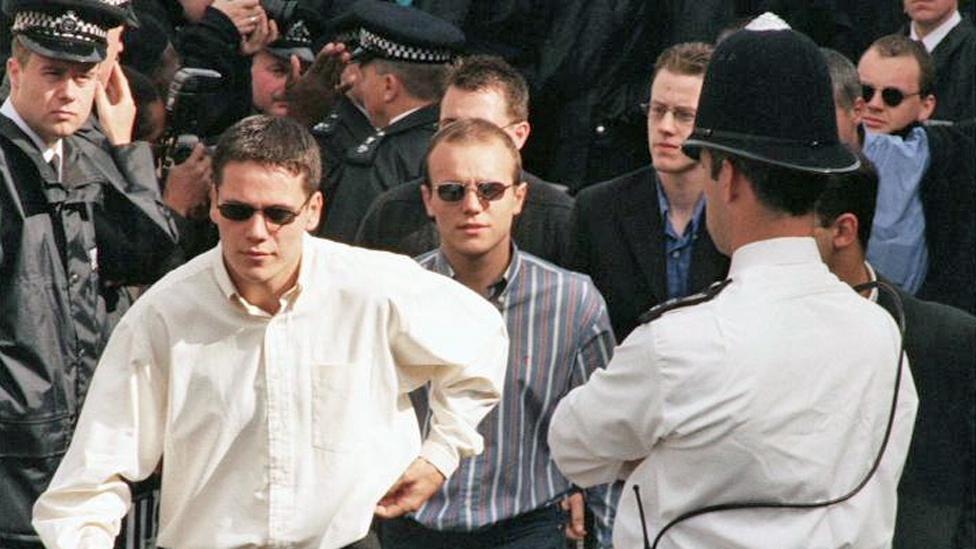
The five suspects gave evidence to the Stephen Lawrence Inquiry in 1998 - pictured Jamie and Neil Acourt (front), David Norris and Gary Dobson
In 1997, an independent investigation by Kent Police identified 11 lines of inquiry the Met had failed to follow. The BBC has discovered one of them was Matthew White.
Officers from the Kent Police operation, conducted on behalf of the police watchdog, asked senior Met detectives if they had checked whether White was there during the murder. Kent Police formally recommended that his role be fully investigated.
But the BBC has discovered that the recommendation was not properly followed.
The police failures regarding Matthew White started from the beginning.
The BBC can reveal that in 1993, a crucial lead was buried, and only discovered 20 years later.
In 2006 Det Ch Insp Clive Driscoll took over the murder investigation. After a forensic breakthrough, his team secured the convictions of Dobson and Norris in 2012.
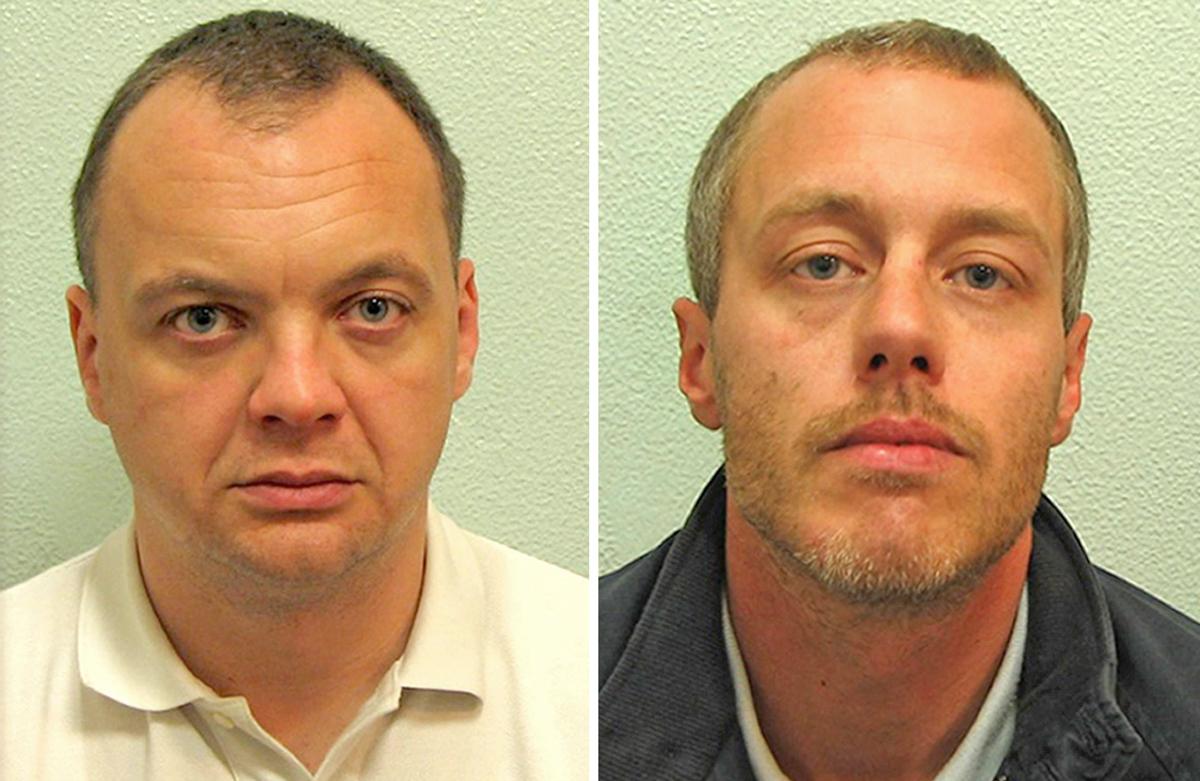
Gary Dobson (left) and David Norris were jailed in 2012 for the murder of Stephen Lawrence
Driscoll told the BBC that the day after the convictions, his superior officer Cressida Dick suggested he shouldn't bother going after the other suspects, even though the trial judge had urged police to pursue them.
Cressida Dick did not respond to the BBC request for comment.
"There is no doubt that there wasn't the enthusiasm to carry on," said Driscoll. The "Sword of Damocles" was hanging over the team, he added.
His team continued investigating.
Officers began systematically reviewing information from the 1993 investigation, looking for new leads.
They rented a room in a pub, sitting together as they read through early internal police messages and actions, checking to see what had been done about each one.
One message from 1993 stated that White's stepfather had said his stepson may not have told police all he knew.
The BBC obtained the message, which corroborates what Driscoll remembers.
The source of the information was identified in the message as a Met detective, who was said to know the stepfather "well". Names were given for both of them. The detective was not part of the murder investigation.
The lead, however, seemed to have gone cold.
So, in 2013, officers from Driscoll's team visited the same man. He denied having spoken to an officer about White.
But Driscoll was not satisfied, so he visited the man himself, and quickly established the person in question was a different stepfather, a man called Jack Severs.
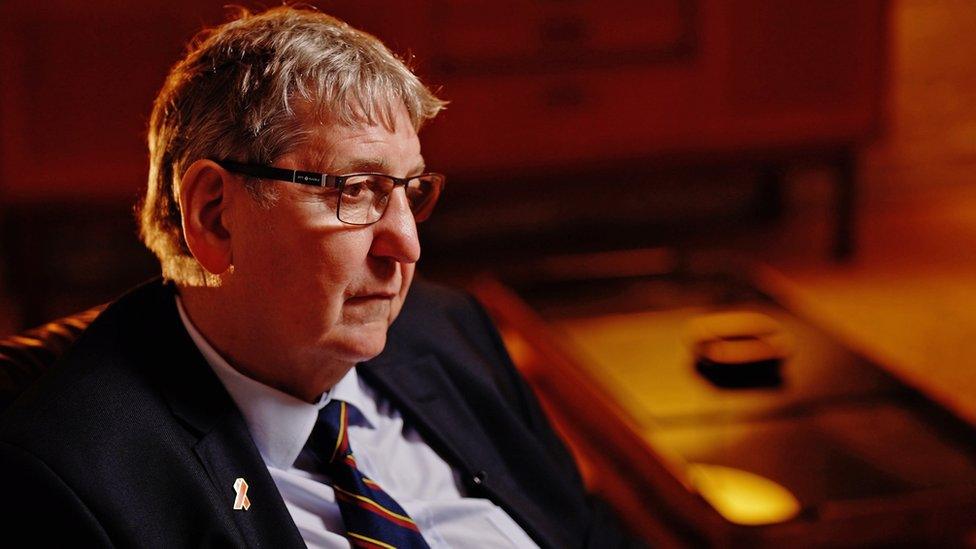
Det Ch Insp Clive Driscoll tracked down Jack Severs, Matthew White's stepfather, in 2013
Matthew White's mother had re-married twice after her relationship with White's father had ended.
The 1993 message had named the second stepfather, meaning later investigation teams were sent in the wrong direction.
The wrong stepfather's name did not come from the detective who contacted the murder investigation team. Instead, it came from the team itself. The fact that wrong information was entered into the system meant an important lead was buried.
Driscoll located Jack Severs in 2013 and knocked on his door. Severs expressed surprise that it had taken two decades to be visited.
"You're rushing this job," Driscoll recalls him saying.
What Severs disclosed was significant. He died in 2020 and to verify what he said, I gained access to a copy of his statement and interview.
He said that days after the murder, he saw White in the street in Eltham. White admitted being present during the attack and said Stephen deserved it. Severs said White had shown no emotion and had behaved like it was an "everyday occurrence".
He said White knew those involved but did not say their names. Severs had inferred from White that it was the prime suspects.
He told detectives he had not fallen out with White, whom he regarded as his son, and had no reason to lie about him.
According to his statement, Severs said that in 1993 he had spoken to a Met detective he knew through the freemasons. It was the same detective named in the message I've seen.
Severs said that as far as he was aware, the detective had been in touch with the Lawrence investigation team at the time.
I located that detective, who has now retired.

Stephen Lawrence: The Sixth Suspect
New evidence about the murder of Stephen Lawrence, uncovered by BBC investigative reporter, Daniel De Simone.

He confirmed Jack Severs approached him 30 years ago saying he had a relative with information about the murder, and that the relative had been there that night. The officer said he had passed information on to the homicide investigation.
I have discovered that Det Supt Brian Weeden, who was leading the murder investigation at the time, knew about the lead. He was the senior investigating officer (SIO).
His own notebook, which the BBC has seen, proves it.
When Weeden wrote down lists of leads, his habit was to include the name of the responsible officer at the start of each one. When he wrote down the one involving White's stepfather, he wrote "SIO" - a reference to himself.
Weeden's notebook suggests a meeting was planned with White and his stepfather, but that never happened. It was two decades before the lead was followed up.
In response to our investigation, the Met accepted a "significant and regrettable error" had taken place in responding to White's stepfather.
Lord Sentamu, the former Archbishop of York who advised the 1998 Macpherson public inquiry into Stephen's murder, says the inquiry was "misled" as a result of Met's failure to provide accurate information about the lead on White.
He said the "murder would have been resolved" at the time had the Met done its job.
In 2013 Driscoll arrested White, who refused to answer questions. The detective was unable to complete the investigation as he was asked to retire weeks later.
Witness Purple
Jack Severs' wasn't the only witness to have told officers that White had admitted being present during the attack. During a vast re-investigation into Stephen's murder, which began in 1999, there was an opportunity to put together two independent accounts describing admissions by White.
But this didn't happen.
I've seen documents showing one of the investigation's core goals was to pursue lines of inquiry identified in 1997 by Kent Police as having been missed or ignored by the Met. One of them was Matthew White.
I have also seen statements from the time given by a man we are calling Witness Purple. He gave police detailed accounts of White confessing to having been at the scene of the murder and having taken part in the violence.
He said White had named the others involved as Norris, Dobson, Knight, and the Acourt brothers.
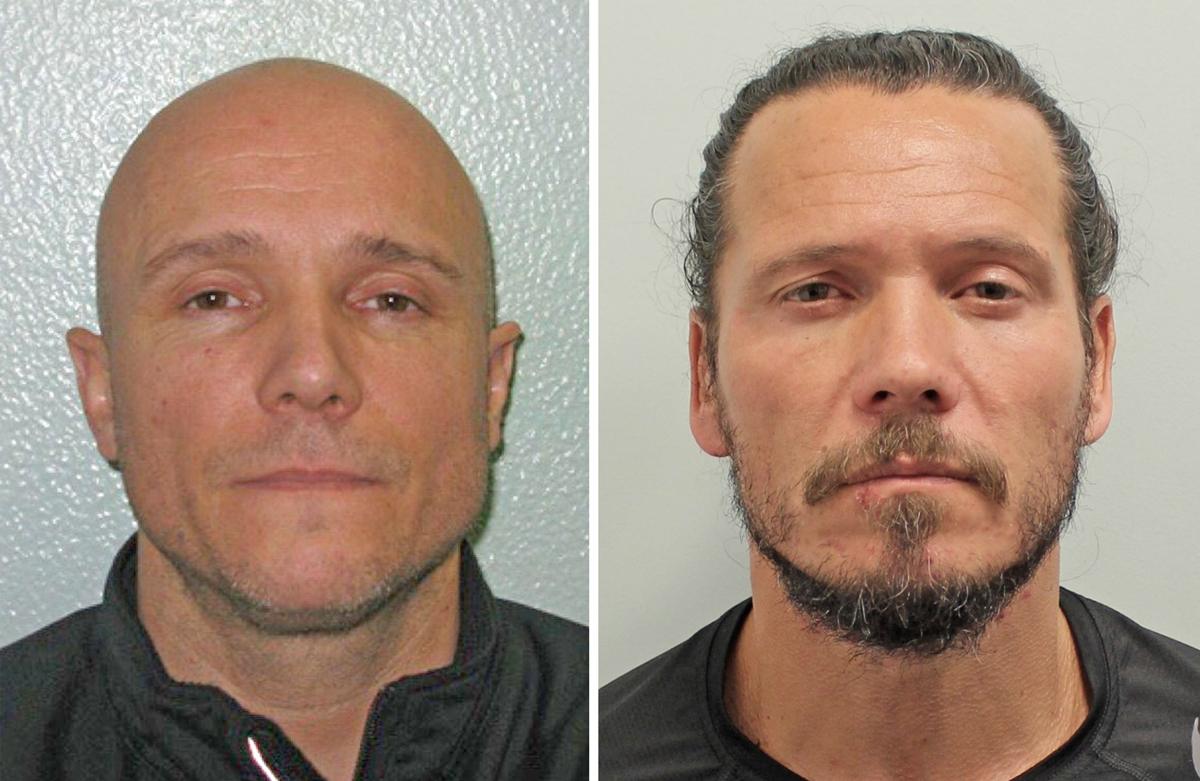
Both Neil (left) and Jamie Acourt have served time in prison for drug offences
Witness Purple said he had spoken to White soon after the murder and that White had told him, "We've done some black kids up the road".
Witness Purple said: "Matty had shouted something out to them, they'd shouted something back and that Matty run over to give them a dig or something and everyone else run over there and piled in.
"Matty went to put the boot in and then the others done him up like a kipper."
White was quoted by Witness Purple saying that Norris and Neil Acourt had "started getting silly with a knife, stabbing and cutting him [Stephen Lawrence]".
Witness Purple said White had visited the Acourts' house later that night to warn them Stephen died, after walking back to the scene and seeing the emergency service response.
Witness Purple's description of what White told him tallies with the first account by Duwayne Brooks of the lead attacker, most notably that he had shouted at them, ran ahead of the other attackers, and struck Stephen first.
Brooks said that he and Stephen waited some time for a bus, and then moved away from the bus stop, to see if they could spot a bus coming in the distance.
They were slightly apart and calling to one another, when a group of young white men emerged on the opposite side of the road. As if in response to those calls, Duwayne Brooks said he heard someone shout "what, what" followed by a racial slur. He thought the man who shouted was the one who then led the group across the road.
He said the man appeared to be holding a long-ish item - such as an iron bar or rounders bat.
Witness Purple said White later described himself as "the lucky one" because he started the attack and his name was never mentioned.
The witness also said White admitted disposing of evidence.
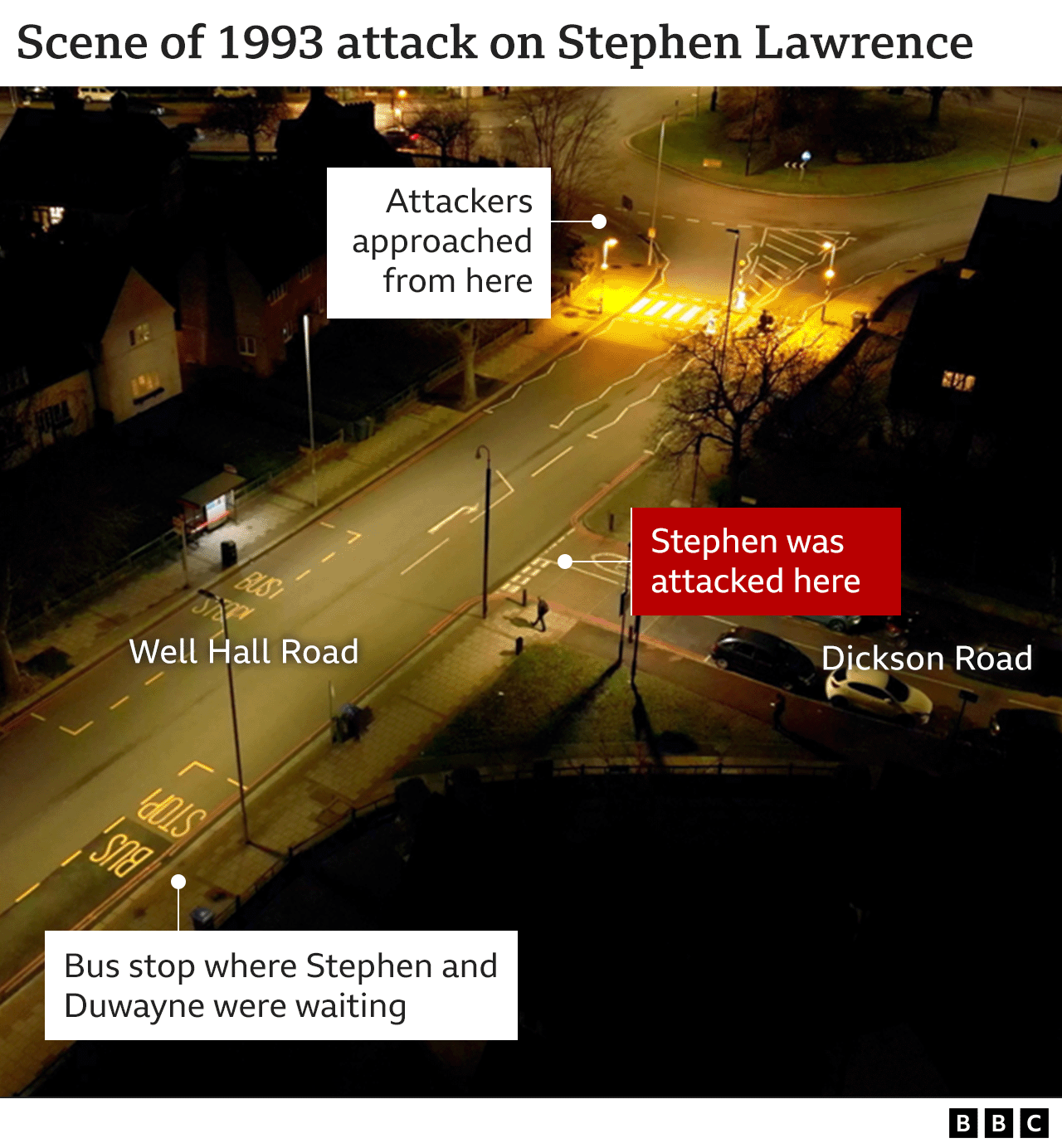
As Witness Purple was giving his statements, White would be arrested and brought in for questioning. Officers had told White the name of the person who was saying things about him, and they simply read out Witness Purple's statements to him. This happened a number of times, and on each occasion White said nothing beyond denying involvement and was released.
The police ended up alienating Witness Purple.
Other witnesses who heard White speak that night did not tell police the same things as Witness Purple. However, their accounts were inconsistent, and one told officers in 1993 that he feared White and the Acourt brothers.
Clive Driscoll told the BBC: "People often said to me, there was a wall of silence. There was never a wall of silence. There was a wall of fear, though. And so if you were going to alert everybody, that this bloke has talked to the old bill, you are effectively, alerting the bad guys… and that cannot be good police work."
Had officers interrogated information on White in their own database, they could have been led back to his stepfather - a credible witness who would also have said White admitted to being at the murder scene.
Fair-haired attacker
The BBC investigation has found that, at the time of the murder, White looked similar to the unidentified suspect known as the "fair-haired attacker".
None of the five prime suspects matched the description of that person.
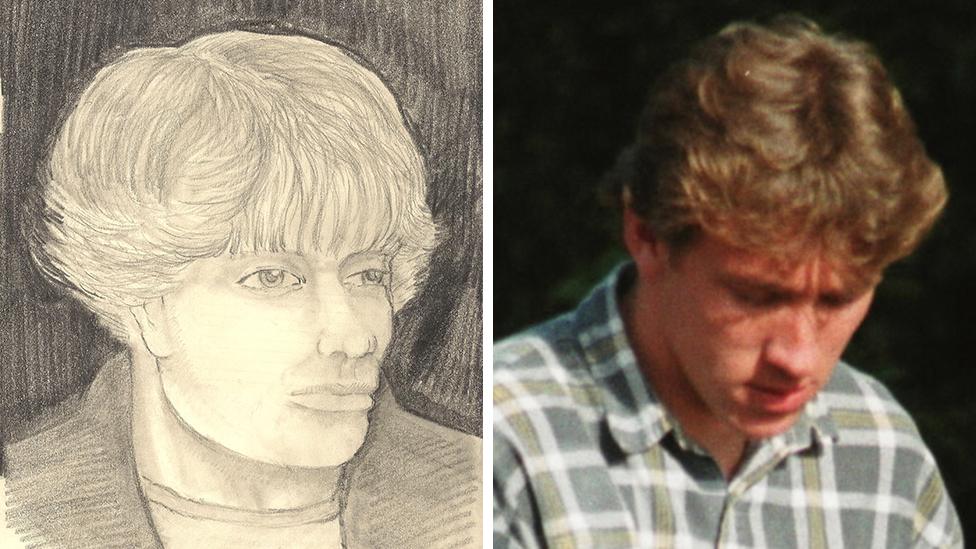
The artist's impression of the "fair-haired attacker" bears a striking resemblance to Matthew White
The BBC has seen surveillance photographs, taken within a fortnight of the murder, which snapped White coming out of a house that was being watched. With his bushy brown hair, he looks strikingly like the person described by Duwayne Brooks.
The first account by Stephen's friend - given within 80 minutes of the attack - was recorded in a police officer's notebook. Brooks said he could only really describe one of the six attackers - the person who struck Stephen first, after leading the others across the road. This person had hair that was "bushy light brown" and "stuck out".
Soon afterwards, Brooks spoke to the first SIO on the case, Det Supt Ian Crampton, who later recalled him having described the attacker's hair as "bushy" and "brown".
In Brooks' full statement later that night, it stated that the attacker's hair was "long, over his ears and it was frizzy and stuck out at the sides". Brooks said the man was aged 18 to 22.
The Met failed to include the light brown hair colour in that statement.
The colour description was not shared with the full team, and it was years before the first notebook description was even known to some senior officers.
When Brooks later compiled a digital image of the man, he described the hair as "very light brown, fairly long, covered ears". Despite this, the Met created a digital image with peroxide blonde hair.
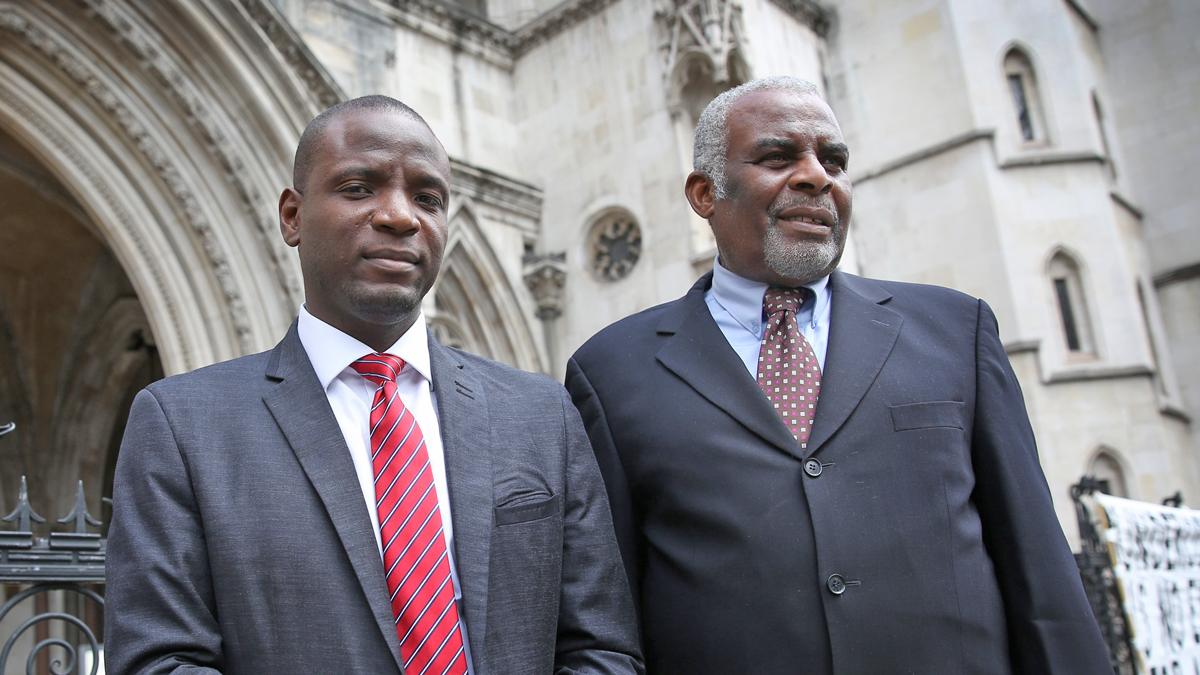
Duwayne Brooks (L) with Stephen Lawrence's father Neville outside the High Court in London in 2015
Other eyewitnesses to the attack also spoke about the lead attacker's hair.
One of those at the bus stop said in a statement: "The white boys who came across the road were running together in a group. Of this group there was a man with fairish hair to the front of the group."
Another eyewitness, also at the bus stop, described one of the attackers as having "medium length fair hair which was frizzy".
The day after the murder, officers involved in house-to-house inquiries appear to have received a briefing that included Brooks' description - as one of them made a note saying "brown bushy hair" alongside other relevant information.
When Det Supt Brian Weeden took over the case four days after the murder, he received a briefing from the man who had led the investigation until then.
A note by Weeden of the briefing said only the following in relation to planned surveillance on the prime suspects: "Photos, is there a guy with frizzy hair?" This was a reference to the lead attacker described by Brooks and others.
But the description was not shared with the full team.
In the same week the surveillance images of Matthew White were taken, artists' impressions and e-fits were created bearing a resemblance to him.
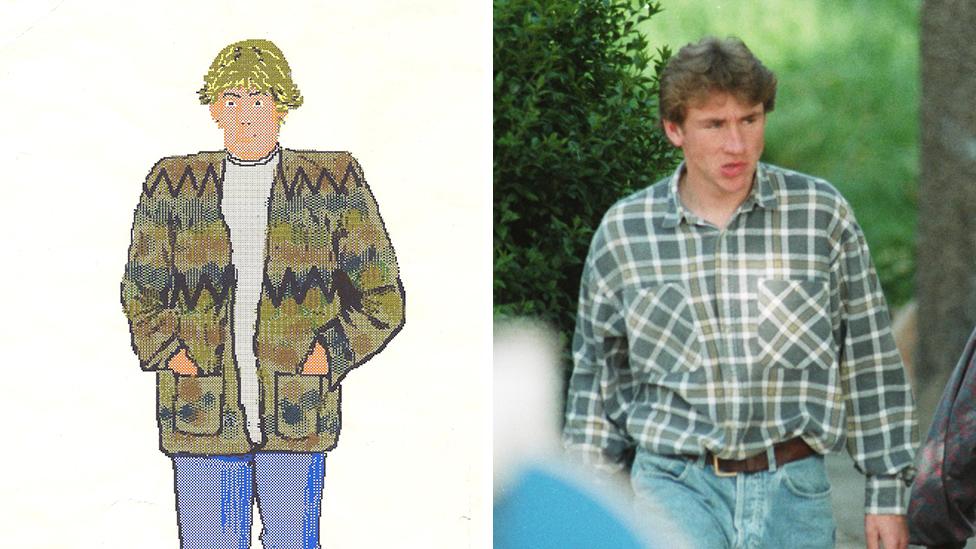
An e-fit image, based on witness descriptions, looks similar to Matthew White photographed a fortnight after the murder
Officers also came face-to-face with White. He spoke to them as a witness. In a section of White's witness statement, one officer even recorded White's hair as being "blonde/fair".
The 1999 Macpherson inquiry report noted: "None of the five suspects appear to have had fair or light brown hair."
It concluded: "There was no co-ordination or analysis of the various descriptions given. The fact that one of the attackers was fair-haired should have been reflected in decisions made as to the elimination of suspects."
White's vanishing alibi
White gave witness statements in 1993 and 1999. He lied in both and - based on my own investigation - it seems the Met have not looked into his alibi for many years.
In 1993, White told Det Sgt John Davidson that, on the night of the murder, he was with friends in Eltham "when I was told there had been a stabbing up Well Hall". That was untrue, as White told those people about the attack.
In his statement six years later, White told police he had been with a friend that night.
I contacted the friend named on the statement - an alibi witness for White - by phone. He refused to answer, but briefly engaged with me by text. He said that one, Neil Acourt, was his "childhood friend and family". He then went quiet.
But White's account was contradicted by other witnesses who saw him alone minutes after the murder - and close to the scene. It meant the friend, whom he would later say he had been with, could not have been with him all night.
One witness - referred to by police as Witness B - told officers he spoke to White shortly before 23:00, after getting off a bus. White, he said, was already aware of an incident nearby. The attack took place around 22:40.
And then, there were the Kavanagh sisters - Kelly and Louise.
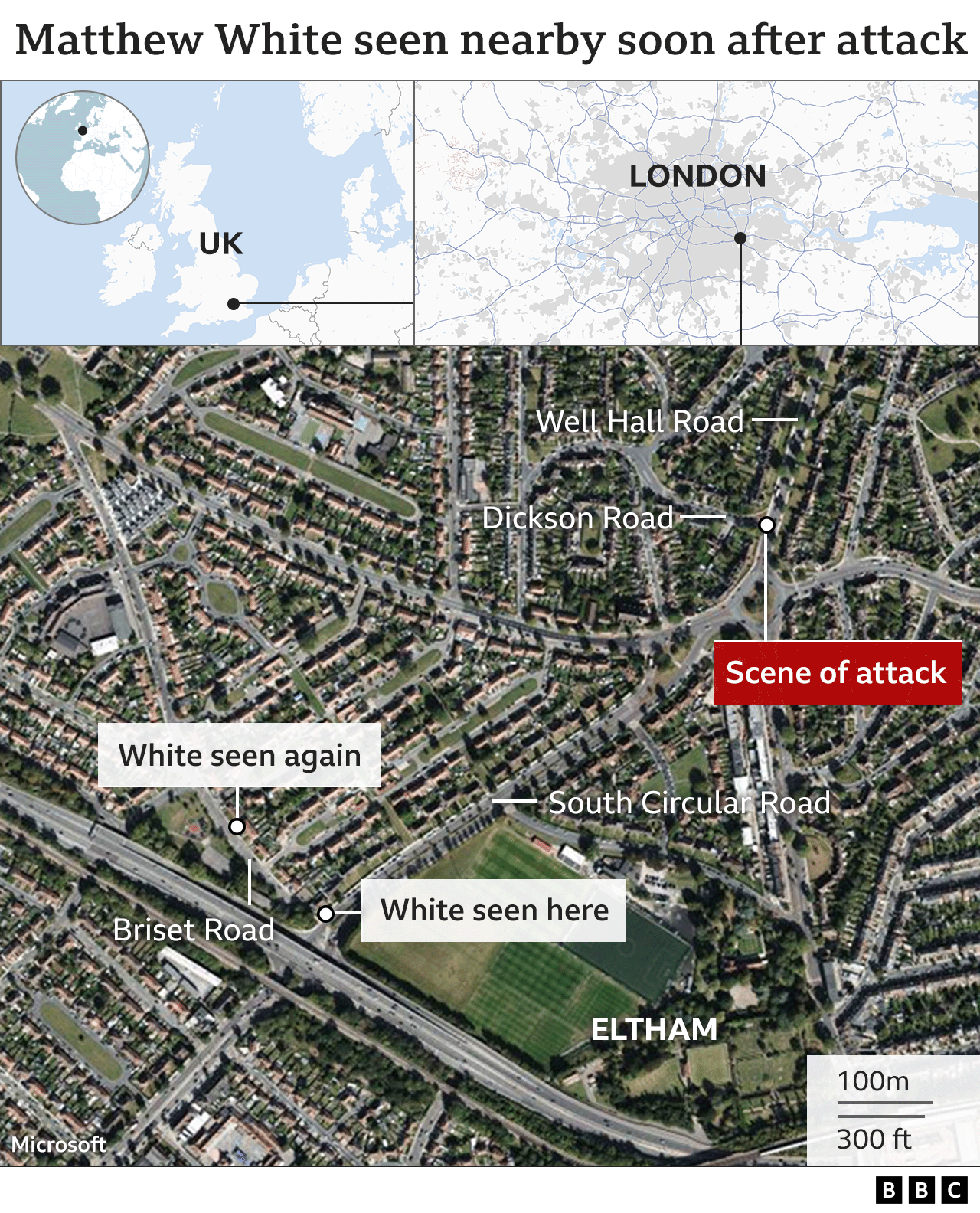
Public narratives of the Lawrence case have included a version of events stating that White - referred to as Witness K - heard about the stabbing from Louise Kavanagh outside her family home.
Louise was said to have passed the early aftermath of Stephen's murder while driving home with sister Kelly. White was then said to have walked past the Kavanagh home just as the sisters arrived - where Louise had told him about what had happened on Well Hall Road. This was Louise's story when she spoke to the police.
This brief meeting supposedly was the moment when White learned of the attack for the first time - and how he was then able to spread the word himself.
Louise Kavanagh died in 2016, but I tracked down Kelly to check her version of events. She told me that the public version of the story was untrue.
Louise, she said, had not been in the car with her that night.
Kelly told me that, instead, it had been White who told Louise about the stabbing - a few yards down the road from where Witness B had seen him, and at roughly the same time. White had stopped to talk to Louise - and had been moving away from the direction of the attack.
When Kelly had pulled up in the car, White - she said - had then moved off leaving Louise to explain how a "black boy" had been stabbed up the road. Kelly says that when she asked Louise how she knew, her sister said that White had told her.
At that point in time, White could only have known it was a stabbing if he had been present or spoken to one of those responsible within minutes of the late night attack. At that time, the fact it was a stabbing was not even known to Duwayne Brooks and the officer who had got there first.
Kelly told me she had not previously told the correct version of events in order to protect her sister.
The key source
One of the major controversies at the Macpherson Inquiry in 1998 was the Met's early handling of a key informant in the case.
That informant's source was Matthew White, whom he was friends with.
I have re-investigated the issue in light of the new evidence about White.
The day after the murder, a man walked into a south-east London police station and provided significant information about the crime. Police gave him an alias - James Grant.
He seemed to know much about what had happened on Well Hall Road.
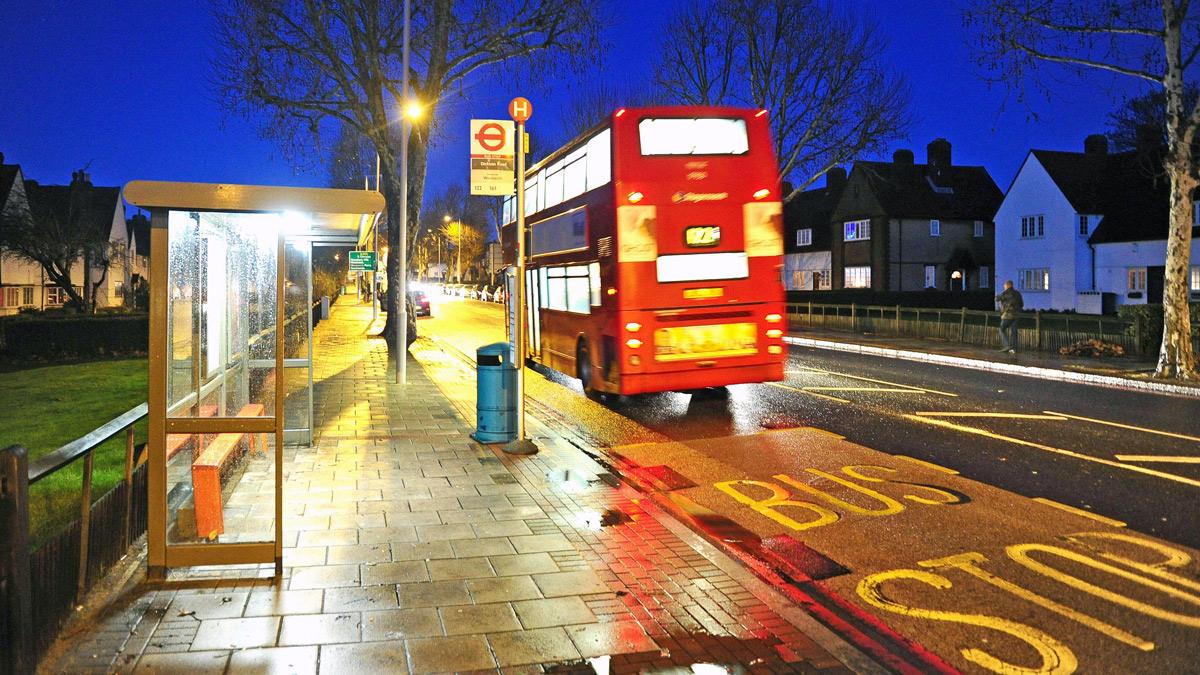
The bus stop where Stephen Lawrence and Duwayne Brooks waited on 22 April 1993 (photo from 2012)
The information Grant told police in 1993 implicated the Acourt brothers, Norris and Dobson. One officer, Det Sgt Davidson, recorded Grant as saying that Norris and Neil Acourt had stabbed Stephen - and even gave details about the location of the wounds.
Grant was also recorded saying a "fifth blonde unknown kid" had been involved. Was this the fair-haired attacker?
Det Sgt Davidson said he registered Grant as a police informant with a senior officer. That officer later denied this ever happened.
All records relating to Grant - except for three brief internal messages - vanished without explanation.
During the Macpherson inquiry, Davidson and other officers denied knowing the identity of James Grant's original source. Davidson said Grant had refused to reveal it, and the inquiry concluded he had not been told.
But Grant told other police teams that his source was Matthew White.
In 1995, officers from the Met's second Lawrence investigation ran into James Grant and Matthew White together.
When the officers visited Grant alone, he was recorded saying the source of "all he knew about the murder" was White, but he did not place White at the scene.
But in 1997, the Kent Police investigation also spoke to Grant. He told Kent officers he had revealed to Det Sgt Davidson the identity of his source at an early stage.
Kent Police asked senior members of the original murder team - including SIO Brian Weeden - what they had done to "reassure" themselves that White had not been present during the murder.
Weeden's deputy replied: "I can't really answer that. I didn't think after those lines."
It was those interviews with senior officers, and the lack of answers, that prompted Kent Police to formally recommend the Met investigate White.
The Macpherson inquiry's final report said that Grant's information "might have provided the key to the solution of the case in quick time. This was because James Grant's source was close to the suspects, if he was not involved with them himself."
I have established that in 1993 James Grant had a reason to dislike the Acourts and Norris, details of which cannot be disclosed, but he had no such animus against Matthew White.
When I located Grant and asked him about White, he became agitated, denied knowing him, and walked away.
Matthew White himself
Matthew White, who could have helped solve the case, died in 2021.
He was a drug user at the time of Stephen's murder in 1993 and later became a heroin addict. Over the years, White had brief periods of employment as a scaffolder and gardener. He also had a history of theft and spent time in prison.
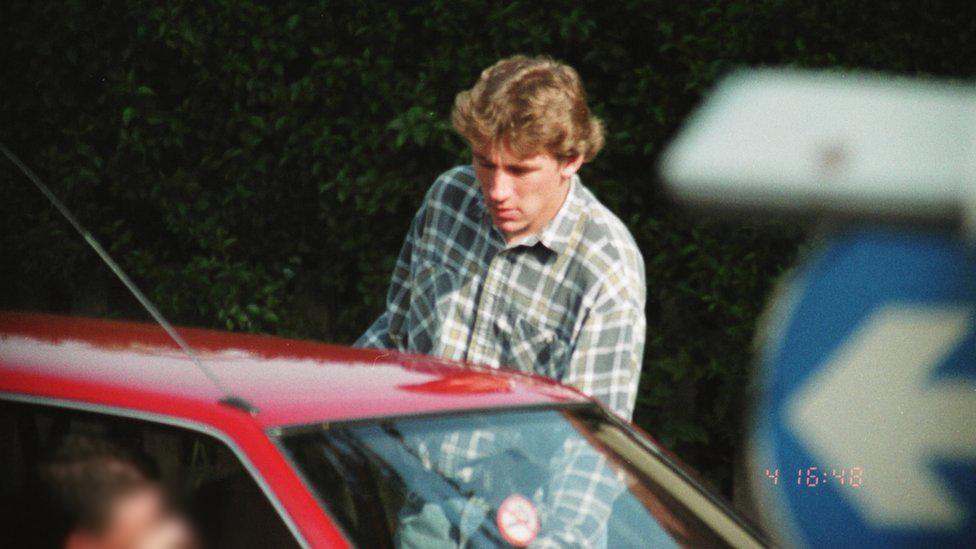
White threatened to "Stephen Lawrence" a black shop worker during an assault in 2020, on Well Hall Road in Eltham
I found his last criminal conviction was an assault in summer 2020 in a shop on Well Hall Road, Eltham - the same street where Stephen Lawrence was murdered.
I located the victim, a black man who had not previously known about White's connection to the Lawrence case.
He described challenging White - a shoplifter - after he entered the premises, leading to a confrontation.
White then assaulted the victim, made threatening and knowing references to Stephen Lawrence, and referred to his associations with other violent people.
White threatened him, saying, "Remember you're in Eltham, remember where you are, remember what happened to Stephen Lawrence. I can call my boys, they can come down and they can deal with you."
He says White mentioned Stephen Lawrence "in almost in every threat" - at least eight or nine times - and referenced that it happened at the nearby bus stop.
White said the victim would be "Stephen Lawrenced" and then attacked him.
Police were called and White was arrested. He pleaded guilty in court to assault. The victim first heard about the conviction from me.
In a statement to the BBC, the Met apologised for not informing the victim that charges had been brought.
A month after the assault, Scotland Yard stopped investigating Stephen's murder, with the Commissioner Cressida Dick saying there were no viable lines of inquiry.
White died in a bedsit a year later.
His inquest heard his body was not found for several days and the cause of death could not be established. Police said there were no suspicious circumstances. White had been suicidal, overdosed by accident in the recent past, and had health problems linked to his drug use.
A statement about his life was read by the coroner. It was written by a relative of White.
During the inquest there was no overt mention of White's status in the Stephen Lawrence investigation, but the relative's statement included a cryptic one-sentence summary of his life: "Matthew was a lovely lad that happened to go to the wrong place at the wrong time".

The BBC put its evidence to the Met Police. In response, the force has taken the almost unprecedented step of naming Matthew White as a suspect, and setting out details about its investigations into him.
The force said White was arrested and interviewed in 2000 and 2013, with files later submitted to prosecutors.
On both occasions the Crown Prosecution Service advised there was no realistic prospect of conviction of White for any offence, the Met said.
The force said Matthew White was seen again in 2020, but there was insufficient witness or forensic evidence to progress further.
Deputy Assistant Commissioner Matt Ward said: "Unfortunately, too many mistakes were made in the initial investigation and the impact of them continues to be seen.
"On the 30th anniversary of Stephen's murder, Commissioner Sir Mark Rowley apologised for our failings and I repeat that apology today."
Update, 26 March 2024: After being challenged by the BBC, the Metropolitan Police has accepted it provided incorrect information in its public statement in response to this investigation. It has now corrected the dates when it provided files to the CPS about Matthew White and when it received charging decisions. The Met statement said it passed the first file to the CPS in May 2005, but the force now accepts it received a charging decision in May 2004 and that the file was passed to the CPS much earlier. The Met statement said it passed the second file in October 2014 but the force now accepts it did so in May 2014.

If you have information about this story that you would like to share with BBC News' Stephen Lawrence investigation please get in touch. Email SLInvestigation@bbc.co.uk, external.
Please include a contact number if you are willing to speak to a BBC journalist. You can also get in touch in the following ways:
WhatsApp: +44 7756 165803
Tweet: @BBC_HaveYourSay, external
Please read our terms & conditions and privacy policy
You can also get in touch using SecureDrop, a highly anonymous and secure way of whistleblowing to the BBC which uses the TOR network. Or by using the Signal messaging app, an end-to-end encrypted message service designed to protect your data.
SecureDrop: http://kt2bqe753wj6dgarak2ryj4d6a5tccrivbvod5ab3uxhug5fi624vsqd.onion/
Signal: 07375 268 551
Please note that the SecureDrop link will only work in a Tor browser. For information on keeping secure and anonymous, here's some advice on how to use SecureDrop.
If you are reading this page and can't see the form you will need to visit the mobile version of the BBC website to submit your question or comment or you can email us at SLInvestigation@bbc.co.uk, external. Please include your name, age and location with any submission.
- Published26 June 2023
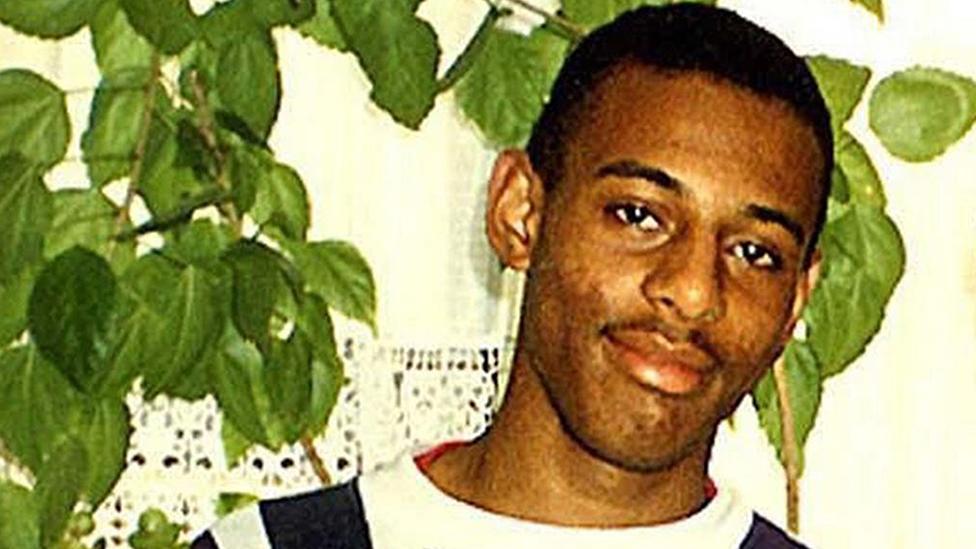
- Published19 April 2023
